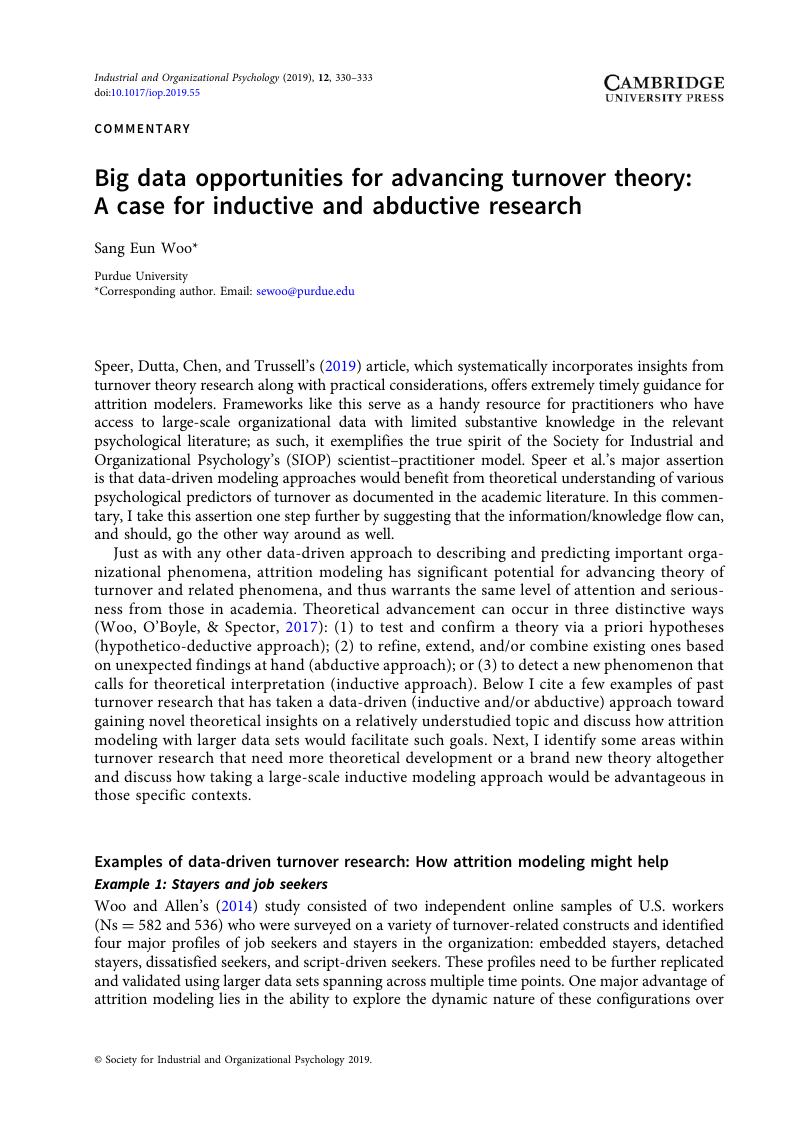Crossref Citations
This article has been cited by the following publications. This list is generated based on data provided by Crossref.
Moon, Young-Kook
and
O’Brien, Kimberly E.
2023.
“I Put In My Two Weeks Notice!” Employee Behavior and Wellness Prior to Exit.
Journal of Career Development,
Vol. 50,
Issue. 6,
p.
1172.
Mozaffari, Fatemeh
Rahimi, Marzieh
Yazdani, Hamidreza
and
Sohrabi, Babak
2023.
Employee attrition prediction in a pharmaceutical company using both machine learning approach and qualitative data.
Benchmarking: An International Journal,
Vol. 30,
Issue. 10,
p.
4140.



